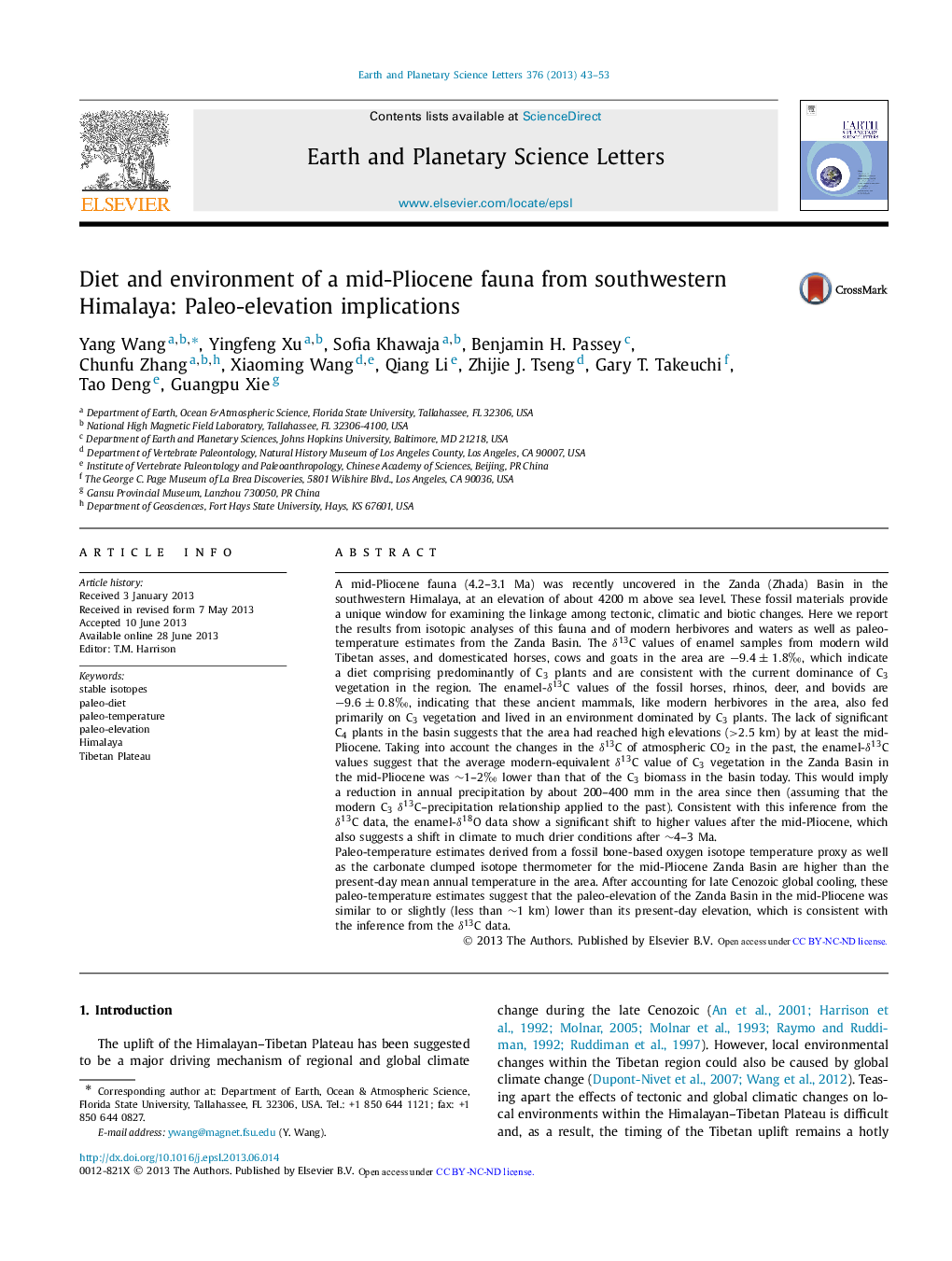| کد مقاله | کد نشریه | سال انتشار | مقاله انگلیسی | نسخه تمام متن |
|---|---|---|---|---|
| 6430087 | 1634779 | 2013 | 11 صفحه PDF | دانلود رایگان |
- δ13C data reveal a dominance of C3 plants in the Zanda Basin in SW Tibet at 3-4 Ma.
- δ13C and δ18O data suggest a shift to a much drier climate since then.
- Temperature estimates for the mid-Pliocene Zanda Basin were higher than today.
- Paleo-elevation of the basin â¼3-4 Ma was similar to its current elevation.
A mid-Pliocene fauna (4.2-3.1 Ma) was recently uncovered in the Zanda (Zhada) Basin in the southwestern Himalaya, at an elevation of about 4200 m above sea level. These fossil materials provide a unique window for examining the linkage among tectonic, climatic and biotic changes. Here we report the results from isotopic analyses of this fauna and of modern herbivores and waters as well as paleo-temperature estimates from the Zanda Basin. The δ13C values of enamel samples from modern wild Tibetan asses, and domesticated horses, cows and goats in the area are â9.4±1.8â°, which indicate a diet comprising predominantly of C3 plants and are consistent with the current dominance of C3 vegetation in the region. The enamel-δ13C values of the fossil horses, rhinos, deer, and bovids are â9.6±0.8â°, indicating that these ancient mammals, like modern herbivores in the area, also fed primarily on C3 vegetation and lived in an environment dominated by C3 plants. The lack of significant C4 plants in the basin suggests that the area had reached high elevations (>2.5 km) by at least the mid-Pliocene. Taking into account the changes in the δ13C of atmospheric CO2 in the past, the enamel-δ13C values suggest that the average modern-equivalent δ13C value of C3 vegetation in the Zanda Basin in the mid-Pliocene was â¼1-2â° lower than that of the C3 biomass in the basin today. This would imply a reduction in annual precipitation by about 200-400 mm in the area since then (assuming that the modern C3δ13C-precipitation relationship applied to the past). Consistent with this inference from the δ13C data, the enamel-δ18O data show a significant shift to higher values after the mid-Pliocene, which also suggests a shift in climate to much drier conditions after â¼4-3 Ma.Paleo-temperature estimates derived from a fossil bone-based oxygen isotope temperature proxy as well as the carbonate clumped isotope thermometer for the mid-Pliocene Zanda Basin are higher than the present-day mean annual temperature in the area. After accounting for late Cenozoic global cooling, these paleo-temperature estimates suggest that the paleo-elevation of the Zanda Basin in the mid-Pliocene was similar to or slightly (less than â¼1 km) lower than its present-day elevation, which is consistent with the inference from the δ13C data.
Journal: Earth and Planetary Science Letters - Volume 376, 15 August 2013, Pages 43-53
